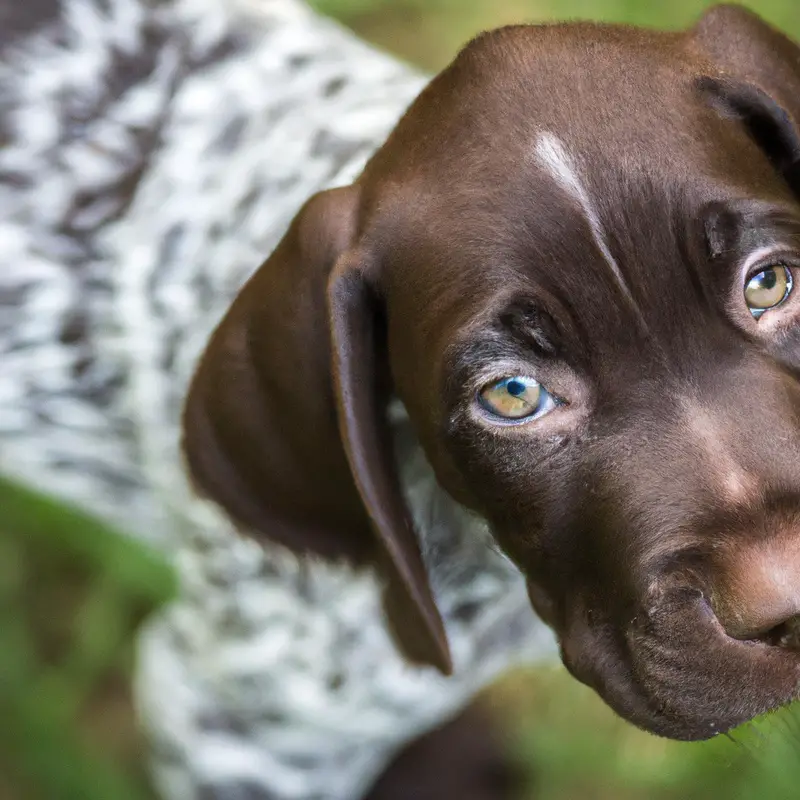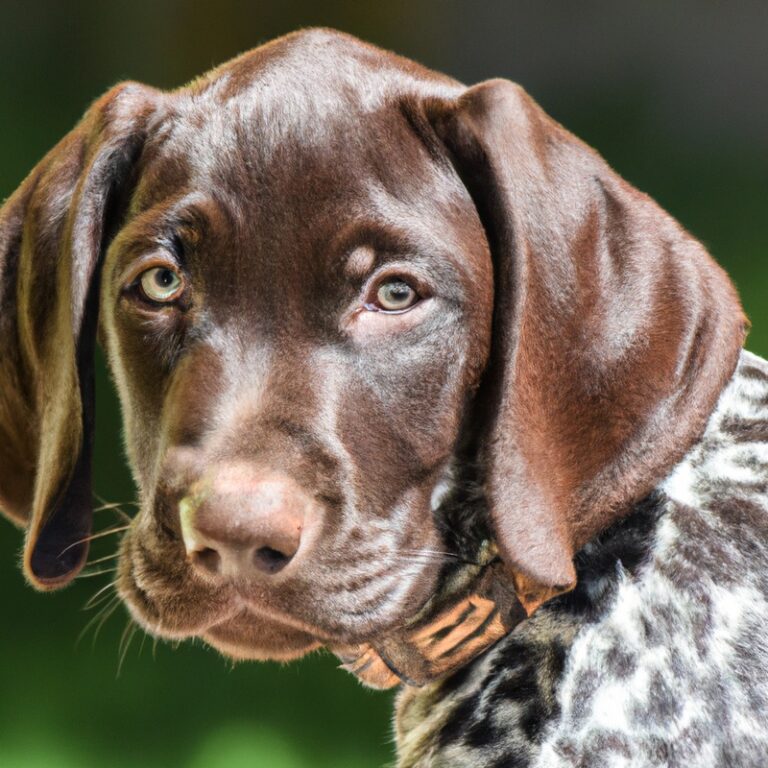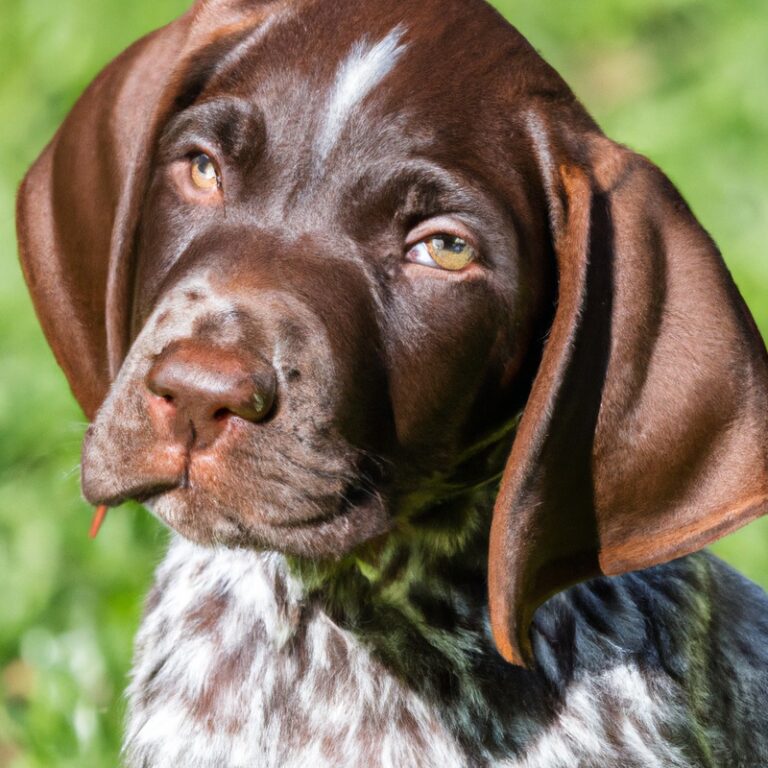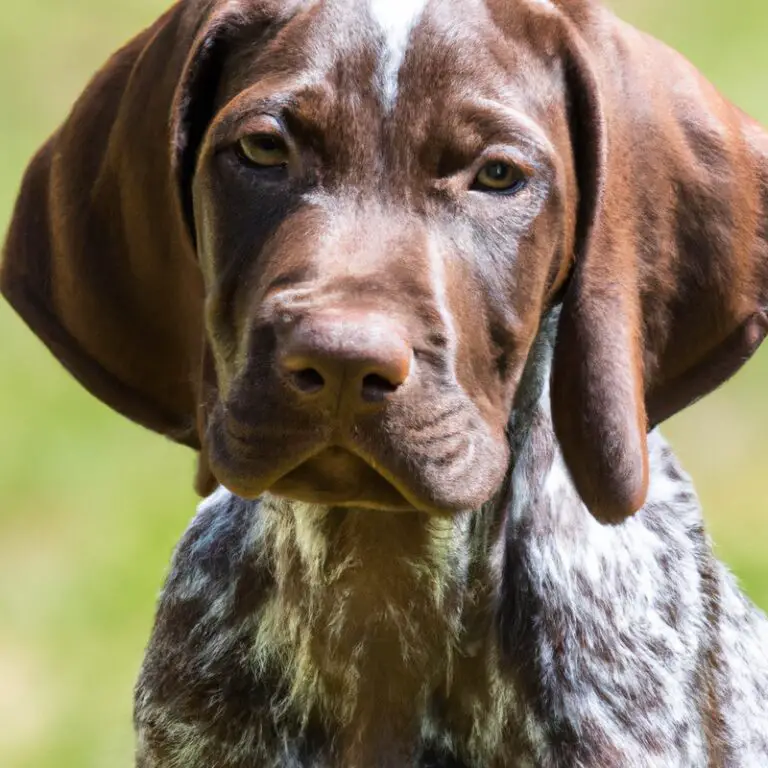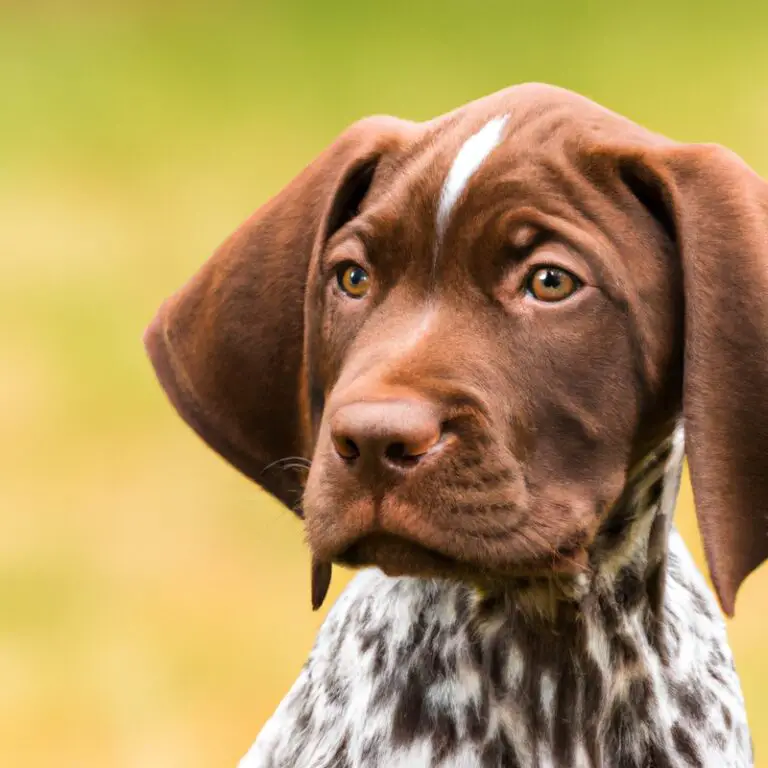How Do I Introduce My German Shorthaired Pointer To New Horses Or Livestock On a Farm?
Key Takeaways:
- Gradually introduce your German Shorthaired Pointer to horses or livestock on a farm to avoid startling or agitating them.
- Use positive reinforcement training techniques to teach your dog to remain calm and respectful around horses and livestock.
- Supervise and monitor interactions between your dog and horses or livestock to ensure safety for all parties involved.
- Allow time for your German Shorthaired Pointer to adjust and become familiar with the horses or livestock before expecting them to interact comfortably.
Imagine this: you’ve got a beautiful German Shorthaired Pointer and you’re ready to introduce them to the horses or livestock on your farm. But how do you ensure a successful and safe interaction?
That’s where I come in.
As a seasoned expert in animal introductions, I’ll guide you through the process step by step. In this article, we’ll explore the importance of a proper introduction, the potential risks of skipping this step, and the key considerations to keep in mind.
Plus, I’ll share some invaluable tips and tricks to help you navigate any challenges that may arise.
So, let’s dive in and create a harmonious relationship between your four-legged friends!
The Importance of a Proper Introduction
Why Introducing a German Shorthaired Pointer to Horses or Livestock is Important
Why is it important to introduce your German Shorthaired Pointer to horses or livestock? Let me explain.
When bringing a new dog onto a farm or around livestock, it’s crucial to have a proper introduction.
First and foremost, introducing your German Shorthaired Pointer to horses or livestock allows them to become familiar with these animals and reduces the risk of any negative interactions. By doing so, you help prevent any potential accidents or harm that could occur if they were to approach the animals in an aggressive or unpredictable manner.
Another important reason for the introduction is to establish a positive relationship between your dog and the horses or livestock.
By carefully introducing them in a controlled environment, you give your dog an opportunity to learn proper manners and behaviors around these animals. This sets the foundation for a harmonious and safe coexistence on the farm.
The Potential Risks of Not Introducing Your German Shorthaired Pointer Properly
The potential risks of not introducing your German Shorthaired Pointer properly to new horses or livestock on a farm are significant. First and foremost, your dog could be at risk of injury if they are not properly introduced to these animals.
Without a proper introduction, both your dog and the animals could become anxious, leading to potential aggressive behavior.
Additionally, not introducing your dog properly could result in your dog chasing or even attacking the horses or livestock. This can be dangerous for both your dog and the animals, as it can lead to injuries or even fatalities.
Moreover, a poor introduction can also create stress and fear for your dog, which can negatively impact their overall well-being and behavior.
This can result in behavioral issues, such as fearfulness and aggression towards other animals in the future. To mitigate these risks, it is important to introduce your German Shorthaired Pointer to new horses or livestock in a controlled and supervised environment.
This allows your dog to become familiar with the animals and learn how to behave appropriately around them.
Taking the time to properly introduce your dog can prevent potential incidents and ensure the safety and well-being of all involved.
Preparing Your German Shorthaired Pointer for the Introduction
Ensuring Basic Obedience Training for Your Dog
For a successful introduction between your German Shorthaired Pointer and new horses or livestock on a farm, it is crucial to ensure that your dog has undergone basic obedience training. This ensures that your dog understands and follows your commands, making the introduction process much smoother and safer for everyone involved.
First and foremost, teaching your dog basic commands such as “sit,” “stay,” “come,” and “leave it” is essential.
These commands allow you to have control over your dog in potentially challenging situations. Practice these commands in different environments and gradually introduce distractions to reinforce their obedience.
Consistency is key when it comes to obedience training.
Make sure to use the same cues and gestures every time you give a command to avoid confusion. Positive reinforcement techniques, such as treats and praise, help motivate your dog to obey your commands and make the training experience enjoyable for both of you.
Remember to always maintain a calm and assertive demeanor during training sessions.
Dogs are quick to pick up on our emotions, so staying calm and confident will help establish you as the leader. This will not only ensure their obedience but also help create a positive and respectful relationship between you and your dog.
By providing your German Shorthaired Pointer with basic obedience training, you are setting them up for success when it comes to introducing them to new horses or livestock on a farm.
It helps establish a foundation of trust, communication, and control that will ultimately make the introduction process safer and more harmonious for everyone involved.
Familiarizing Your Dog with Horses or Livestock Smells and Sounds
Familiarizing your German Shorthaired Pointer with horses or livestock smells and sounds is an important step in preparing them for introduction. First and foremost, start by exposing your dog to these smells and sounds in a controlled environment.
For example, you can play recordings of horse neighs or bring items with the scent of livestock into your home.
Gradually increase the exposure, allowing your dog to become comfortable with these stimuli. This will help them understand and remain calm when they encounter horses or livestock in person.
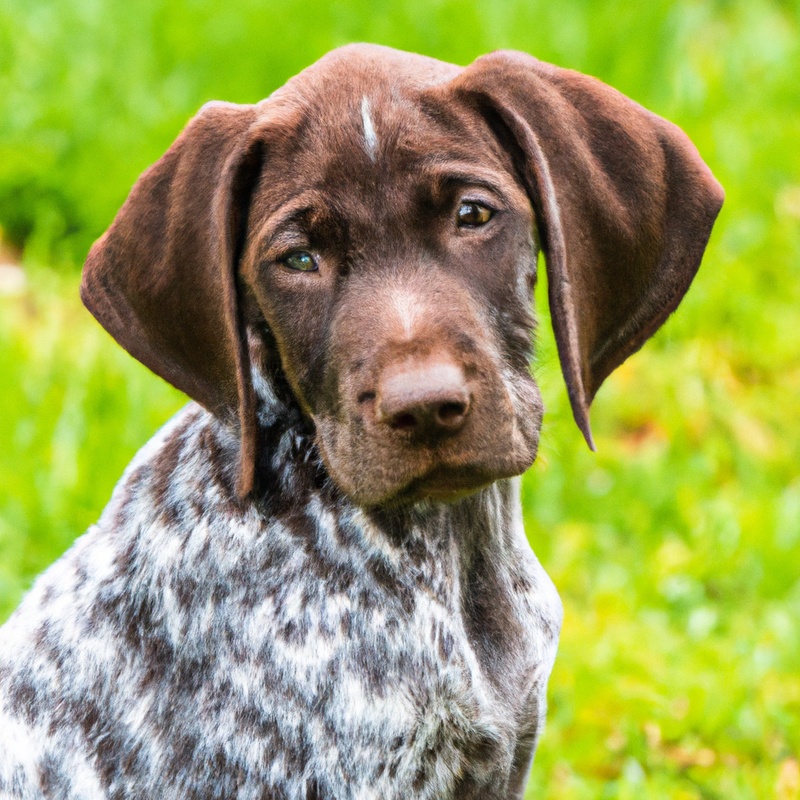
Monitoring Your Dog’s Behavior and Temperament
Monitoring your dog’s behavior and temperament is key when introducing your German Shorthaired Pointer to new horses or livestock on a farm. First and foremost, observe your dog’s body language.
Look for signs of excitement, fear, or aggression.
Keep an eye out for any excessive barking or growling. It’s important to intervene if you notice any concerning behavior, as it could escalate and potentially lead to a dangerous situation.
Additionally, pay attention to your dog’s energy level.
If they seem overly hyper or wound up, it may not be the best time to introduce them to new animals.
Introducing Your German Shorthaired Pointer to Horses or Livestock
Starting with a Controlled Environment and Leashed Dog
To ensure a smooth introduction between your German Shorthaired Pointer and new horses or livestock, it’s important to start in a controlled environment with your dog on a leash. This will give you better control over the situation and allow you to closely monitor your dog’s behavior.
Begin by selecting a quiet and enclosed area where your dog can observe the horses or livestock from a safe distance.
Keep your dog on a leash at all times during this initial stage. This will prevent any unwanted chasing or aggressive behavior.
Allow your dog to observe the animals from a distance and reward them for calm and positive behavior.
Use treats or verbal praise to reinforce good behavior and redirect their attention if they become overly excited or fixated on the animals. Gradually decrease the distance between your dog and the horses or livestock over several sessions, always ensuring that your dog remains calm and under control.
If your dog shows signs of stress or discomfort, take a step back and give them more time to adjust.
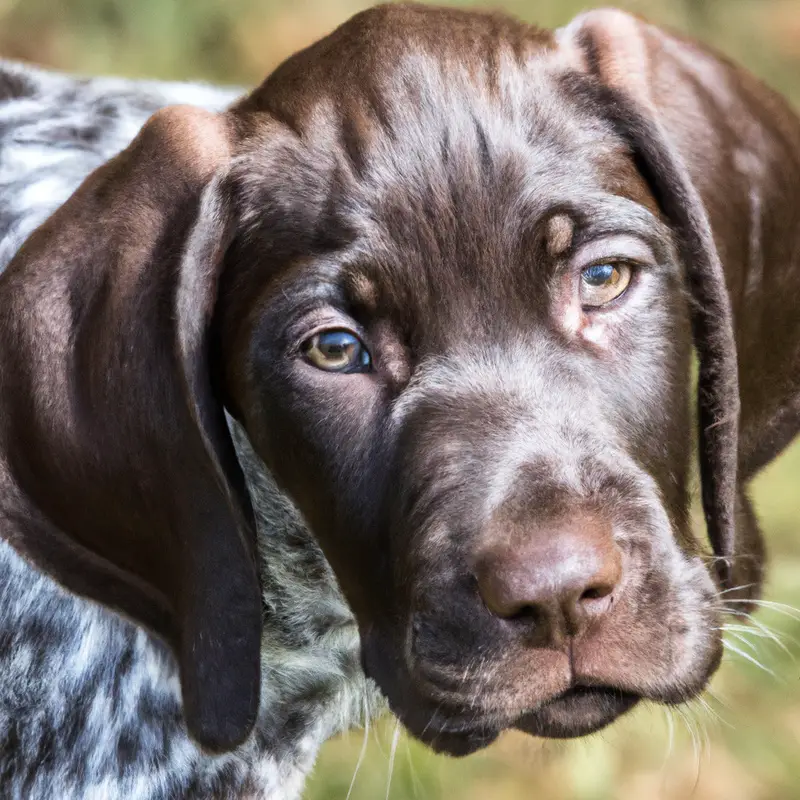
Allowing the Animals to Observe Each Other from a Safe Distance
Alright, let’s talk about how to introduce your German Shorthaired Pointer to new horses or livestock on a farm. One crucial aspect of this process is allowing the animals to observe each other from a safe distance.
So, how do you do it?
First and foremost, it’s important to ensure the safety of both your dog and the other animals. Start by keeping your dog on a leash and introducing them to the horses or livestock while maintaining a safe distance.
This way, they can see each other without any risk of immediate contact.
Give them some time to observe and get used to each other’s presence. This allows them to gauge each other’s reactions and behavior without feeling threatened.
It’s essential to stay calm and confident during this process to create a positive environment for all involved.

Gradually Increasing the Proximity and Interaction between Your Dog and Horses or Livestock
Gradually increasing the proximity and interaction between your German Shorthaired Pointer and horses or livestock is important for a smooth and safe introduction. Here’s how you can do it:
- Start from a distance: Initially, keep your dog at a safe distance from the horses or livestock. This allows them to observe each other without feeling threatened.
- Controlled exposure: Slowly increase the amount of time your dog spends near the animals. Start with short, supervised sessions and gradually extend the duration. This helps build familiarity and reduces any potential anxiety.
- Positive reinforcement: Use rewards such as treats or praise to reinforce positive behavior from your dog. This can help establish a positive association with the presence of horses or livestock.
- Leash training: Teach your dog to walk calmly on a leash around the animals. This gives you control and ensures the safety of both your dog and the horses or livestock.
- Supervised interactions: Once your dog is comfortable being around horses or livestock, you can consider supervised interactions. Make sure to monitor their behavior closely and intervene if necessary.
Key Considerations for a Successful Introduction
Supervising the Interaction and Correcting Unwanted Behavior
Supervising the Interaction and Correcting Unwanted Behavior When introducing your German Shorthaired Pointer to new horses or livestock on a farm, it’s essential to supervise the interaction closely. Keep a close eye on both your dog and the animals to ensure everyone’s safety.
If you notice any unwanted behavior from your dog, such as barking, chasing, or aggressive behavior, it’s important to correct it immediately.
Use verbal cues, such as “no” or “leave it,” and redirect their attention to something else. Be consistent with your corrections and rewards.
Praise and reward your dog when they exhibit calm and appropriate behavior around the animals.
This positive reinforcement will strengthen their understanding of what is expected from them.
Rewarding Positive Interactions and Encouraging Good Behavior
Rewarding positive interactions and encouraging good behavior are essential when introducing your German Shorthaired Pointer to new horses or livestock on a farm. Here are some key tips to keep in mind:
- Use positive reinforcement: When your dog displays appropriate behavior around the animals, praise and reward them with treats or verbal praise. This positive reinforcement helps your dog associate good behavior with positive experiences.
- Start with supervised interactions: Begin by introducing your dog to the animals in a controlled environment while they are both on a leash. This allows you to closely monitor the interactions and intervene if necessary.
- Gradual exposure: Start with brief interactions and gradually increase the duration as your dog becomes more comfortable. Avoid overwhelming them with too many animals at once.
- Remain calm and confident: Dogs can pick up on our emotions, so it’s important to stay calm and confident during the introduction. This will help your dog feel more relaxed and less likely to exhibit anxious or aggressive behavior.
Recognizing Signs of Stress or Aggression in Any of the Animals
Recognizing signs of stress or aggression in animals is a crucial aspect of ensuring a safe and successful introduction between your German Shorthaired Pointer and new horses or livestock on a farm. First and foremost, it’s important to pay close attention to body language.
Signs of stress can include excessive lip licking, panting, pacing, or cowering.
Aggression may be displayed through growling, bared teeth, raised hackles, or lunging. Additionally, take note of any unusual vocalizations or sudden changes in behavior.
By being observant and proactive, you can intervene early and prevent potential conflicts.
Dealing with Challenges and Troubleshooting
Addressing Fear and Anxiety in Your German Shorthaired Pointer
Addressing Fear and Anxiety in Your German Shorthaired Pointer First and foremost, it’s essential to understand that fear and anxiety in dogs, including German Shorthaired Pointers, can be quite common. However, there are ways to address and alleviate these issues.
One effective approach is to gradually expose your dog to the things that trigger their fear or anxiety.
For example, if your dog is afraid of loud noises, start by playing recordings of those sounds at a low volume. Over time, gradually increase the volume while providing positive reinforcement and rewards for calm behavior.
It’s crucial to create a safe and secure environment for your dog.
This can include having a designated space where they can retreat to when they feel overwhelmed. Provide comforting items like toys or blankets in this space to help them feel secure.
Consider incorporating calming techniques such as gentle massages or soothing music.
These can help relax your German Shorthaired Pointer during stressful situations. Additionally, using natural remedies like lavender essential oil or herbal supplements may help to reduce anxiety.
Regular exercise and mental stimulation are also crucial for managing fear and anxiety in dogs.
Engaging their minds and bodies through activities like puzzle toys or obedience training can help redirect their focus and alleviate stress. Ultimately, addressing fear and anxiety in your German Shorthaired Pointer requires patience, consistency, and understanding.
If you find that these techniques are not effective or your dog’s anxiety is severe, it’s best to consult with a professional dog trainer or veterinarian for further guidance.
Dealing with Livestock Anxiety or Aggression Towards the Dog
Dealing with livestock anxiety or aggression towards your dog can be a challenging situation. But there are a few strategies you can try to manage this issue:
- Slow and gradual introductions: Start by introducing your dog to one or two calm and friendly livestock animals in a controlled environment. Gradually increase the exposure over time, making sure both the dog and the livestock feel comfortable and safe.
- Positive reinforcement: Use positive reinforcement techniques to reward your dog for calm and relaxed behavior around the livestock. This could be verbal praise, treats, or a favorite toy. Consistency and patience are key.
- Supervision and management: Always supervise interactions between your dog and livestock to ensure their safety. Use a leash or a secure enclosure if necessary. Gradually increase the time spent together, while still closely monitoring their interactions.
- Professional help: If your dog’s anxiety or aggression persists and becomes uncontrollable, it may be beneficial to seek guidance from a professional animal behaviorist or trainer who can provide specialized training techniques and solutions.
Seeking Professional Help and Consultation if Necessary
If you’re having trouble introducing your German Shorthaired Pointer to new horses or livestock on a farm, it’s important to remember that seeking professional help and consultation is always an option. Sometimes, dealing with animals can be tricky, and it’s best to involve someone who has experience in this area.
Whether it’s a professional dog trainer or an animal behaviorist, they can provide valuable guidance and expertise to ensure a smooth and safe introduction process.
Don’t hesitate to reach out for help if you feel that you need it.
Maintaining a Safe and Positive Relationship between Your Dog and Horses or Livestock
Regularly Monitoring and Assessing the Interaction
Regularly monitoring and assessing the interaction between your German Shorthaired Pointer and horses or livestock is essential for maintaining a safe and positive relationship. Here’s how you can do it:
- Observe their body language: Pay close attention to how your dog and the animals are behaving around each other. Look for signs of stress, fear, or aggression in both parties.
- Stay close and intervene if necessary: Be present during their interactions and be ready to step in if things get out of hand. Use verbal commands or a leash to control your dog’s behavior if needed.
- Use positive reinforcement: Reward your dog for calm and respectful behavior around the horses or livestock. This will help them associate positive experiences with being in their presence.
- Assess progress over time: Monitor how your dog’s behavior evolves over multiple interactions. Are they becoming more comfortable and respectful? Are the animals responding positively? Adjust your approach if necessary.
- Seek professional guidance if needed: If you feel unsure or if problems persist, don’t hesitate to consult a professional dog trainer or behaviorist. They can provide personalized advice and guidance to ensure a safe and harmonious relationship between your dog and the animals.
Providing Ample Exercise and Mental Stimulation for Your Dog
Providing ample exercise and mental stimulation for your dog is essential for their overall well-being and happiness. First and foremost, regular physical exercise is crucial to keep your dog healthy and prevent behavioral issues caused by pent-up energy.
Take your dog for daily walks, play fetch, or engage in active games like agility or obedience training.
This will not only tire them out physically but also mentally stimulate their minds. In addition to physical exercise, mental stimulation is equally important for your dog’s mental health.
Engage them in activities like puzzle toys, treat-dispensing toys, or hide-and-seek games to keep their minds active and challenged.
Consider enrolling your dog in obedience classes or teaching them new tricks to provide mental stimulation and strengthen the bond between you.
Being Mindful of Your Dog’s Needs and Limitations
When introducing your German Shorthaired Pointer to new horses or livestock on a farm, it’s important to be mindful of your dog’s needs and limitations. First and foremost, consider your dog’s temperament and level of training.
Some dogs may have a strong prey drive or may be easily excited, which can make it challenging for them to be around horses or livestock.
Additionally, understand your dog’s physical abilities. Large animals like horses can unintentionally harm a dog if they are not careful.
Keep in mind that some dogs may be fearful or anxious around large animals, so it’s important to go at a pace that is comfortable for your dog.
Always supervise your dog closely during introductions and use a leash or secure fencing to prevent any accidents. Gradually expose your dog to the horses or livestock in a controlled environment, rewarding calm and positive behavior.
Final Verdict
Properly introducing your German Shorthaired Pointer to horses or livestock on a farm is essential for the safety and well-being of all animals involved. Through basic obedience training, familiarization with smells and sounds, and careful monitoring of behavior and temperament, you can create a positive and successful introduction.
By starting in a controlled environment, gradually increasing proximity, and rewarding positive interactions, you can ensure a safe and harmonious relationship between your dog and the horses or livestock.
It is crucial to address any challenges or issues that arise promptly and seek professional help if needed. By maintaining a vigilant and attentive approach, providing exercise and mental stimulation, and prioritizing your dog’s needs and limitations, you can establish a lasting and positive relationship between your German Shorthaired Pointer and the farm animals.
Trust and consistency are key in fostering a safe and enjoyable experience for everyone involved.

